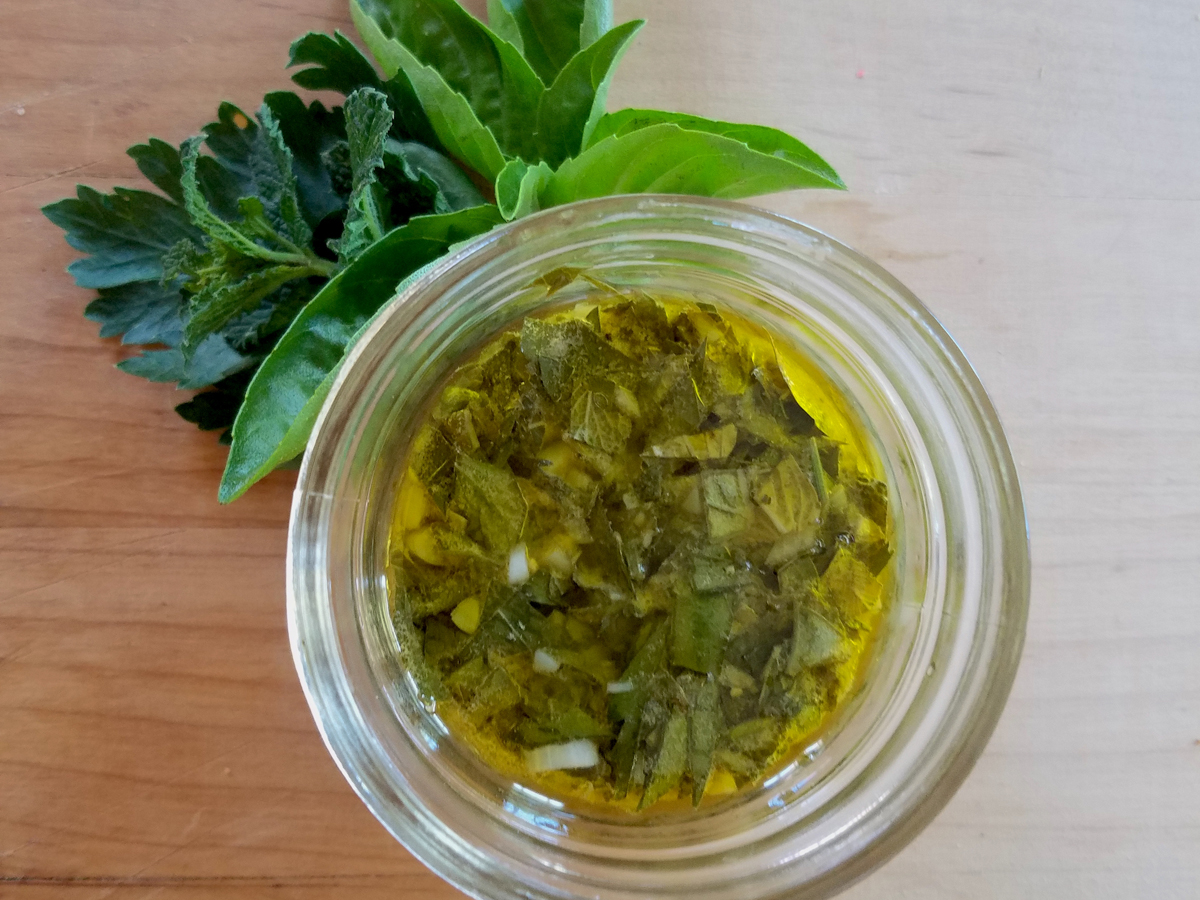Martinez News-Gazette Columnist
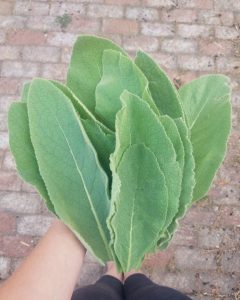
In light of the smoke-filled skies we’ve been experiencing in many parts of California, I decided to put this month’s column out a few days early to offer some herbal info related to the fires. These past few weeks have been a challenge: refinery fires, wildfires, evacuations, power outages, closed roads, air quality, and of course – the growing concern for what feels like the new normal in California this time of year. All these things combined to make for a physically and emotionally stressful couple of weeks.
Though herbs may not be a cure-all for the potential damage that smoke and trauma can have on our bodies and lives, there are certainly a handful of plants that I turn to whenever these unfortunate events take place. Below you can find my go-to herbal remedies for support during fire season.
Adaptogens
Adaptogens are a class of herbs that are thought to help the body better modulate stress. Fire season, especially with the addition of massive power outages, can be an extremely stressful time, and it’s in times like these that we can all probably use a lil’ extra help. The two adaptogens listed below are my favorites to use when there is smoke in the air.
Reishi (Ganoderma lucidum)
We briefly touched on Reishi mushroom in last month’s Hometown Herbalist column and it’s coming back for round two. Reishi is an adaptogen that has historically been used to help the body better modulate stress while simultaneously nourishing the immune system. Reishi has also traditionally been used to help support the bronchial system, making it one of my favorite choices for autumn and particularly for times like these. It can be made into a tea using dried slices or taken as a powder.
Tulsi (Ocimum tenuiflorum/Ocimum sanctum)
A lovely adaptogen that has historically been used to help calm the nervous system. Traditional use of this herb also includes protecting the body from toxin-induced damage and bronchial support. Tulsi can be taken as a tea and can be found in a variety of pre-made blends available at the grocery store. My favorite brands are Organic India and Traditional Medicinals.
Fire Tea
When the air outside gets smoky I immediately brew up a big batch of what I’ve started calling fire tea. This blend contains herbs that have traditionally been used to help boost the immune system, calm the nerves, support the respiratory and nervous systems, and protect the body from toxin-induced stress.
Ingredients
1-2 tablespoon dried elderberries
3-5 slices fresh ginger root
1 tablespoon tulsi leaf/flower
1 tablespoon mullein leaves
½ tablespoon thyme sprigs
Directions
Add elderberries and ginger to a small pot and cover with 5 cups of water. Bring to a simmer, cover partially, and cook on low heat for 20-30 minutes. Turn off the heat and add the tulsi, mullein, and thyme. Cover and steep for 10-15 minutes, then strain and enjoy.
I make sure to strain this blend extra well, as the fine hairs on mullein can irritate the throat. I use the finest mesh strainer that I have, which in my case is the same bag I use to make nut milk, but you can also use a coffee filter. You can find many of the herbs mentioned in this blend at Harvest House in Concord, Five Flavors Herbs in Oakland, or Herb Folk Community Medicine in Petaluma. You can also order them from Mountain Rose Herbs online.
Don’t have access to the herbs listed above? Peppermint and chamomile tea bags – which are available at most grocery stores – sweetened with a little honey, can go a long way as well.
Interested in learning more? Check back on the first Sunday of every month for the Hometown Herbalist column featuring local, seasonal, and regional botanical information.
Note: This information has not been evaluated by the FDA and is not intended to diagnose, treat, cure, or prevent any disease. This information should not be used as medical advice and is for educational, historical, and research purposes only. Always consult with your physician before adding herbal supplements into your diet, especially if you are pregnant, nursing, or on medication.
]]>Author Bio:
Anna Marie Beauchemin is a trained clinical herbalist, biologist, educator, and writer. Born and raised in Martinez, California she is passionate about sharing her craft with her community and helping people find balance and increased wellness in their lives. She offers private herbal consultations and herb-based workshops, locally. For more information visit her website at eastbayherbals.com or follow her on Facebook and Instagram @eastbayherbals
References Cited
Winston, David, and Steven Maimes. Adaptogens: Herbs for Strength, Stamina, and Stress
Relief. Healing Arts Press, 2019.
Rogers, Robert Dale. The Fungal Pharmacy: the Complete Guide to Medicinal Mushrooms and Lichens of North America. North Atlantic Books, 2011.
Cohen, Marcmaurice. “Tulsi – Ocimum Sanctum: A Herb for All Reasons.” Journal of Ayurveda and Integrative Medicine, vol. 5, no. 4, 2014, p. 251., doi:10.4103/0975-9476.146554.
Metzger, ByJane. “Creating a Local Materia Medica: Holy Basil.” Herbal Academy, 10 Jan. 2018, theherbalacademy.com/creating-local-materia-medica-holy-basil/.
Special to the Gazette
Summer is in full swing and with it comes that sweet East Bay heat. While I love cooking in the kitchen I generally take the hotter months to give my oven a break, focusing my culinary pursuits on salads, grilling, and quick stove-top meals. With the garden in peak season, I always try to utilize as many backyard goodies and fresh herbs as possible. This month’s recipe features a simple, cooling vinaigrette that highlights three of my most abundant garden herbs – parsley, basil, and mint. This flavorful dressing can be made without using any heat and is the perfect topping for grilled meats, grain-based salads, and roasted or grilled veggies.
Herb Vinaigrette
Ingredients:
1 small bunch fresh basil leaves (about 2-3 tablespoons)
1 small bunch fresh parsley leaves (about 2-3 tablespoons)
1 slightly smaller bunch fresh mint leaves (about 2 tablespoons)
2-3 cloves minced garlic
¼ cup vinegar (red wine or champagne)
2-3 tbl olive oil
Salt and pepper to taste
Optional Extras: dijon mustard, shallots, chives, chili pepper flakesDirections:
Collect and wash fresh herbs, shake to dry. Chop herbs into small to medium size pieces and add to a mixing bowl. Smash and mince 2-3 cloves garlic (more if desired) and add to the bowl. Season with salt and pepper and any of the optional extras if you are choosing to use them. Add vinegar and oil and whisk ingredients together. The sauce can be served immediately or stored in the fridge for 2-3 days. While the flavors will meld together as the sauce sits, the bright color of the herbs will fade. For the most vibrant version of this sauce – serve immediately. Slather generously over your desired dish and enjoy!
Interested in learning more? Check back on the first Sunday of every month for the Hometown Herbalist column featuring local, seasonal, and regional botanical information. Save The Date! Interested in taking your herbal curiosity to the next level? Check out the Martinez Adult School fall offerings for our upcoming 4-week class geared toward home herbalism! Class begins September 24th – sign up today at https://mae-martinez-ca.schoolloop.com/
Note: This information has not been evaluated by the Food and Drug Administration, and is for educational, historical, and research purposes only. It is not intended to diagnose, treat, cure, or prevent any disease and should not be used as medical advice. If you have a medical concern please seek out a qualified health care professional, and always consult your physician before adding herbal supplements into your diet, especially if you are pregnant, nursing, or on medication.
Anna Marie Beauchemin is a trained clinical herbalist and biologist. Born and raised in Martinez, California, she is passionate about sharing her craft with her community and helping people to find balance and wellness in their lives. For more information visit her website at eastbayherbals.com or follow her on Facebook and Instagram @eastbayherbals.
]]>Martinez News-Gazette Columnist
The San Francisco Bay Area is home to many awe-inspiring native plants, a number of which have a long history of ethnobotanical and medicinal use. If you’ve been hiking in the hills over the past month or so, you’ve likely noticed many of these charming botanicals in bloom. Spring and early summer are stellar times of the year to catch many of the area’s most spectacular flowers as the weather is still cool enough to support a wide range of plant types. The list below features some of the in-season medicinals that can be easily sighted around town.
Elderberry Flowers (Sambucus nigra): While the berries of these lush medicinals are prized for their antiviral and immune boosting properties, the flowers of elderberry also have a long and rich history of use. Traditionally used in cordials, champagnes, and as unique flavoring element in confections, elderflower holds a prominent place in any herbal-based kitchen. While the flowers may be tempting to collect, remember that if you remove all the flowers from your elder tree, you also won’t be blessed with any berries during the summer (which also act as forage for native wildlife).
California Poppy (Eschscholzia californica): California’s state flower – the CA Poppy has been in bloom since spring went into full gear. This classic flower can be seen amongst many a California landscape, and can commonly be found along roads, across hills, and in disturbed and/or rocky areas. In herbalism the California poppy is well-known for its sedative properties and has traditionally been used as a remedy for sleep. Remember – state flowers have some legality tied to their collection in the wild, so (like many medicinals) be sure to grow this beauty in your yard if you wish to collect it.
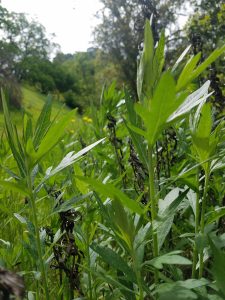
Mugwort (Artemisia douglasiana): One of my favorite native California medicinals, this magical little plant can often be found in shady moist areas throughout our regional hiking trails. This plant has a strong bitter flavor and has been revered in herbal folklore for its ability to induce lucid dreams when kept nearby at night. While this lovely botanical isn’t in flower yet, it’s thriving in the cooler, moister days leading up to summer.
Yerba Buena (Clinopodium douglasii): Yerba Buena is currently making its debut in the hills around Martinez and Crockett. This low growing native perennial herb can commonly be found in shady woodland areas, and in cool damp places. If you happen to spot it on the trail, make sure to properly identify and then take a whiff! The aroma is unforgettable.
California Buckeye (Aesculus californica): Not as commonly used as a medicinal in modern times, but this native California tree has a long and rich history of use with the indigenous tribes of the area. The large spike shaped flower heads are a common sight in late spring throughout the East Bay hills and are quite breathtaking when in full bloom. Next time you’re out hiking, see if you can spot one!
As is the case with all medicinal herbs it is imperative to be 100% certain of the identification before exploring, and equally as important to leave these beautiful plants where they belong; their existence is often an integral part of the ecosystem that they are a part of.
Interested in learning more? East Bay Herbals’ next Free Community Workshop will be on June 18th from 6:30-7:30 pm at the Martinez Library. We will be talking about DIY Herbal Skincare for Summer Sun Exposure – hope to see you there!
Note: This information has not been evaluated by the Food and Drug Administration, and is for educational, historical, and research purposes only. It is not intended to diagnose, treat, cure, or prevent any disease and should not be used as medical advice. If you have a medical concern please seek out a qualified health care professional, and always consult your physician before adding herbal supplements into your diet, especially if you are pregnant, nursing, or on medication.
Anna Marie Beauchemin is a trained clinical herbalist and biologist. Born and raised in Martinez, California, she is passionate about sharing her craft with her community and helping people to find balance and wellness in their lives. For more information visit her website at eastbayherbals.com or follow her on Facebook and Instagram @eastbayherbals.
]]>Martinez News-Gazette Columnist
If you’re anything like me you’ve already hit your budget for this year’s garden, but in the off-chance that you haven’t (or just can’t say no to adding more), I wanted to send you off to the plant store with a list of some of my favorite garden herbs. The herbs featured below are easy to grow, act as a staple in most culinary dishes, and also happen to be five of our most coveted plant allies.
5 Medicinal Herbs You’ll Want To Consider Growing This Year
Mint (Mentha spicata or M. piperita)
I have both Spearmint (Mentha spicata) and Peppermint (Mentha piperita) in my yard, but if you’re short on space you can easily plant just one as they both have similar properties. This classic cooling herb makes an excellent iced tea when it’s hot out, adds a refreshing, herbaceous touch to salads, and can be made into a sweet yet medicinal syrup to be used in cocktails, drinks, and desserts. Mint’s most beloved quality is its action on the digestive system, acting as both a carminative and antispasmodic. Please note, this little plant has been known to spread when placed in a favorable location (cool and moist) and can become invasive. If you prefer to keep it contained, try throwing it in a large pot.
Tulsi (Ocimum tenuiflorum)
Also known as Holy Basil, this relative of the common culinary basil is native to India and does well in our hot summer climate, though you’ll need to be sure to water it well. I’ve had luck with Tulsi in both pots and in containers, but beware that it doesn’t always make it through the winter. Tulsi is most commonly used as a nervine herb, helping to support the nervous system in times of stress. It makes a wonderful tea and is my go-to herb whenever things get tense.
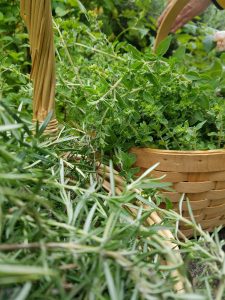
Oregano (Origanum vulgare)
A popular antimicrobial herb, oregano not only provides a unique flavor in the culinary profile, but acts as a powerful kitchen medicinal as well. My favorite way to use this tasty herb? As an infused oil or vinegar! I love to use the vinegar (and oil) in dressings, cooking, and salves. For more info on how to make your own infused vinegar featuring oregano, see my article last month in the Gazette.
Rosemary (Rosmarinus officinalis)
A powerful antioxidant with an uplifting quality – rosemary makes for an excellent tea, a refreshing hair rinse, and is a staple in my spice cabinet. I add rosemary to many of my dishes and use it in vinaigrettes whenever possible. It grows well in our hot, arid climate, and while it can get quite large when planted in the ground, it can also be grown in a pot for those lacking sufficient yard space. Make sure to collect any extra rosemary you may have and dry it for use later in the winter.
Thyme (Thymus vulgaris)
Also known for its antimicrobial action, thyme is one of my go-to herbs for the respiratory system and is one of the main culinary herbs I use in the kitchen. Just like oregano, thyme makes a lovely oil and/or vinegar and can be used in home wellness in a variety of ways. I use thyme for anything ranging from a cup of tea when I’m feeling under the weather, to dressings and marinades, and as a complementary seasoning in most of my dishes. In my experience thyme does well in our area with a little extra water, and can be quite happy in either a pot on your porch or in a garden bed with all your other herbs.
***
Ready to get to out there and plant your garden? There are a number of local plant and herb sales coming up (like the one today 4/5/19 from 11-5 at the DVC Horticulture Department), but if you miss one of those both Annie’s Annuals and Perennials in Richmond and Morningsun Herb Farm in Fairfield carry an extensive collection of both herbs and medicinal plants.
Want To Learn More? East Bay Herbal’s next Free Community Workshop will be on June 18th from 6:30-7:30 pm at the Martinez Library. We will be talking about DIY Herbal Skincare for Summer Sun Exposure.
]]>Note: This information has not been evaluated by the Food and Drug Administration, and is for educational, historical, and research purposes only. It is not intended to diagnose, treat, cure, or prevent any disease and should not be used as medical advice. If you have a medical concern please seek out a qualified health care professional, and always consult your physician before adding herbal supplements into your diet, especially if you are pregnant, nursing, or on medication.
Anna Marie Beauchemin is a trained clinical herbalist and biologist. Born and raised in Martinez, California, she is passionate about sharing her craft with her community and helping people to find balance and wellness in their lives. For more information visit her website at eastbayherbals.com or follow her on Facebook and Instagram @eastbayherbals.
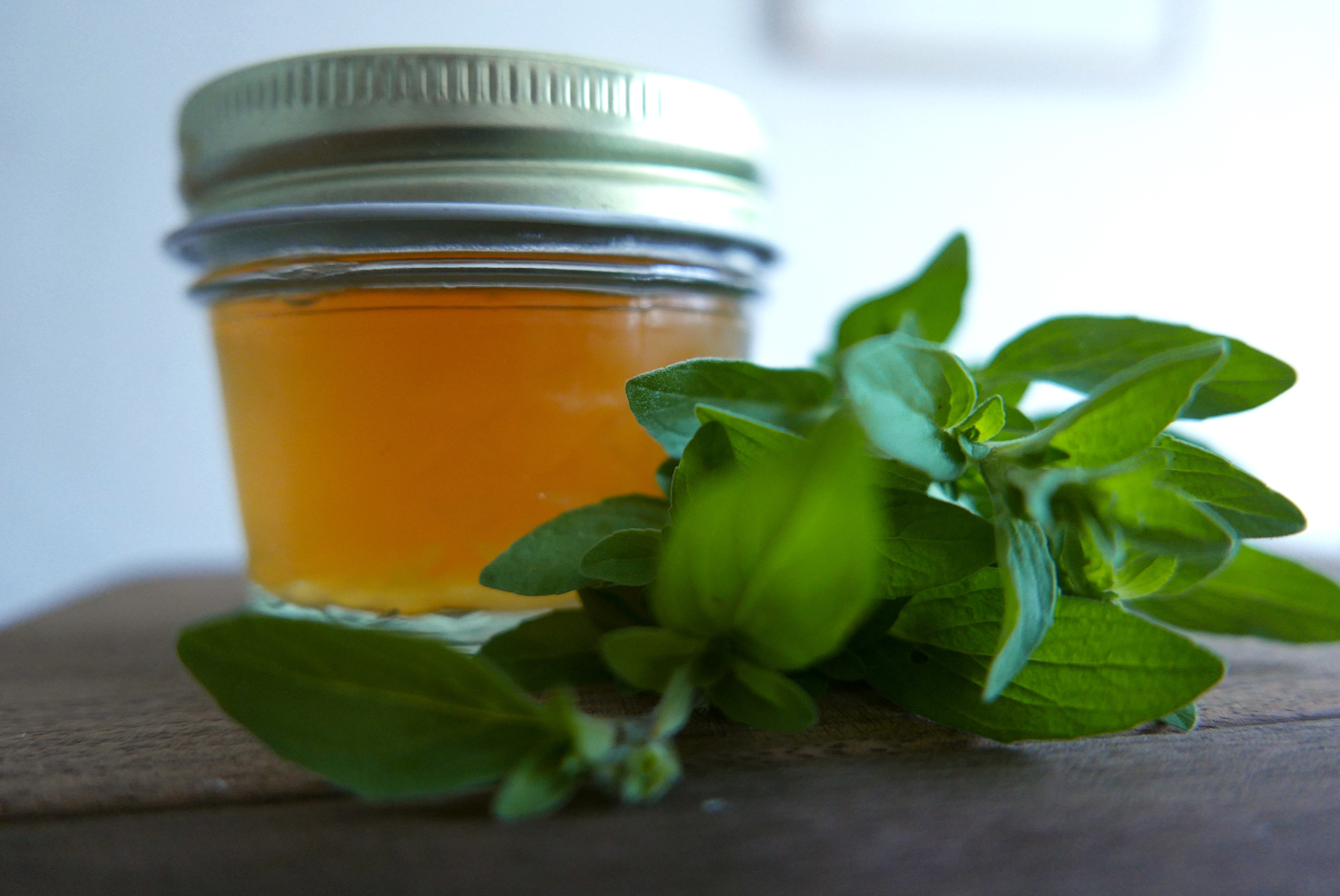
By ANNA MARIE BEAUCHEMIN
Special to the Gazette
Spring has sprung and with it returns my monthly column featuring local, seasonal herbal information, recipes, and musings. To kick off the season I’m starting with one of my favorite springtime recipes – herbal infused vinegar. During this brief, lush, green time in the East Bay, medicinal and culinary herbs abound. Perennial plants are waking from their slumber pushing out fresh growth and potent plant medicine.
Why Herbal Vinegar
Herbal vinegar is an easy and delicious way to extract the medicinal properties out of many springtime plants. From culinary classics like oregano and thyme to seasonal medicinals like nettles, cleavers, and chickweed, the garden is ripe with herbaceous beauties that can easily be made into kitchen medicinals.
Many of the fresh spring greens available this time of year are packed full of nutrients and do not keep particularly well as dried herbs. These nutrient-dense plants are often easily extracted in vinegar making the recipe featured below an excellent way to preserve the bounty of spring for use later in the year.
When selecting which herbs to make my seasonal vinegar with, I always go for something that is growing abundantly in my yard or available at my local farmers market. If you’re collecting herbs such as cleavers (Galium aparine), chickweed (Stellaria media), or Nettle (Urtica dioica) from your yard make sure to be 100% certain on the identification of the plant.
How To Use Herbal Vinegar
Spring vinegar makes for a lovely addition to salad dressings and marinades and can be used pretty much interchangeably with apple cider vinegar for any culinary purpose. Keep in mind that your herbal vinegar will likely have an “herby” flavor – so you may want to account for this in your culinary flavor profile.
Ingredients
1 16-oz glass mason jar (with reusable plastic lid)
8 to16-oz high-quality apple cider vinegar (such as Braggs)
¼ to ½ cup seasonal medicinal herbs (such as cleavers, chickweed, nettle, oregano, or thyme)
Screens or cookie sheets for wilting herbs
Directions
Pick the best-looking patch of springtime medicinals available to you and collect roughly 1-2 cups of the fresh plant. Rinse the herbs well in your kitchen sink and make sure to sift through them and remove any pests, bugs, or unwanted plant material. Pat the herbs dry and lay them out on large drying screens (cookie sheets will do as well if you don’t have screens) for drying. Making vinegar with dried plant material is always best, so if you have a good drying setup, I would dry the plants for a few days to a week, and use immediately to make your vinegar. If you don’t have a great drying setup and are concerned with the plants getting moldy, you can wilt them for a couple of days and then use them. The more water that is in your plants, the more water will go into you vinegar, diluting the liquid and reducing the vinegar’s preservation qualities. If the plants mold during the drying process, toss them into your compost bin and try again. You don’t want to make vinegar with moldy plants.
Once you have your dried (or semi-dried) plant material, add to the mason jar filling 1/4 to half full. Fully cover the plant material with apple cider vinegar and seal the jar with a plastic lid (metal lids will rust due to the vinegar, but this can be avoided by placing a plastic barrier between the lid and the jar) and let sit in the fridge for 1-2 weeks, shaking often. After the vinegar has infused, strain out the plant material and store the herb-infused vinegar in the fridge and enjoy! The infusion should last for 3-6 months.
A Note on Collecting Medicinal Plants
It should be noted that as a former biologist, I never promote wild-crafting for your medicinal plant needs. Natural populations of plants are vital to the ecosystems that they are a part of and should be left alone for mother nature to care for. Many of the plants mentioned can be easily grown (and probably already are growing) in your own yard, can be purchased from a local herb supplier, and sometimes even be found at your local farmer’s market.
Want To Learn More? East Bay Herbal’s next FREE Community Workshop will be on April 30th from 6:30-7:30 pm at the Martinez Library. We will be talking about Herbs to help support respiratory health – hope to see you there!
Note: The information presented in this article is for educational purposes only, and is not medical advice. For more information about local, seasonal, herbal remedies and regional botanical information, check back on the first Sunday of every month for the Hometown Herbalist column.
Anna Marie Beauchemin is a trained clinical herbalist and biologist. Born and raised in Martinez, California, she is passionate about sharing her craft with her community and helping people to find balance and wellness in their lives. For more information visit her website at eastbayherbals.com or follow her on Facebook and Instagram @eastbayherbals.
Photo Caption:
Apple Cider Vinegar + Oregano – Photo by Anna Beauchemin
Martinez News-Gazette Columnist
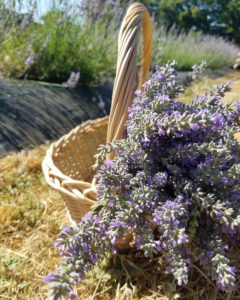 Part of the fun of herbal medicine is how easy it is to incorporate medicinal plants into food. While teas, tinctures, and salves are definitely the mainstays of herbalism, many of the plants we use for medicine are also tasty and fun to cook with. Whenever I can, I try to spruce up my meals (and my treats) with purpose and intention, and for me, this often involves throwing in some medicinal herbs. In honor of the sweltering heat that’s descended upon the earth, I thought I would share one of my favorite therapeutic summer treats – lavender lemonade.
Part of the fun of herbal medicine is how easy it is to incorporate medicinal plants into food. While teas, tinctures, and salves are definitely the mainstays of herbalism, many of the plants we use for medicine are also tasty and fun to cook with. Whenever I can, I try to spruce up my meals (and my treats) with purpose and intention, and for me, this often involves throwing in some medicinal herbs. In honor of the sweltering heat that’s descended upon the earth, I thought I would share one of my favorite therapeutic summer treats – lavender lemonade.
Why Lavender?
Lavender has traditionally been used to help people with anxiety and depression. The plant has a distinct and floral flavor making it a unique addition to the culinary cabinet. The dried and fresh flowers can be used in a variety of dishes ranging from desserts to cocktails, to fancy finishing salts.
When you add the fresh or dried herb to classic lemonade, the result is not only a sweet and refreshing treat but a calming concoction to ease the mind. I like to enjoy this beverage on a warm summer night after a long day at work. It makes a great alcohol-free option for unwinding at the end of the day; sip
slowly and melt into bliss!
Summer Lavender Lemonade
Ingredients
1.5 cups water
½ cup raw honey
1.5 cups fresh-squeezed lemon juice
1-2 tablespoons fresh or dried lavender flowers
*optional – sparkling water
Directions
Combine lavender flowers and honey in a small saucepan. Bring water to boil in a kettle, and pour over honey and lavender. Stir to dissolve the honey, and cover and let sit roughly 30 minutes. Strain honey simple syrup from lavender flowers and add fresh lemon juice. Let cool, then chill overnight. The next day pour over ice and serve with a fresh sprig of lavender on top. For an added kick add a small pour of sparkling water to the glass, giving this sweet and soothing drink a refreshing dose of bubbles.
Note: The information presented in this article is for educational purposes only. For more information about local, seasonal, herbal remedies and regional botanical information, check back on the first Sunday of every month for the Hometown Herbalist column.
Anna Marie Beauchemin is a trained Clinical Western Herbalist and Biologist. Born and raised in Martinez, California, she is passionate about sharing her craft with her community and helping people to find balance and wellness in their lives. She runs her practice in downtown Martinez – offering herbal consultations and custom formulations, herbal education, product development and consulting, and community herb walks. For more information about her services visit her website at eastbayherbals.com, or follow her on Facebook and Instagram @eastbayherbals.
]]>Martinez News-Gazette
With the summer solstice just behind us, we take a moment to honor the beginning of summer and the end of spring. The seeds of the season to come have been set, and all that’s left to do is sit back and watch them grow. While the days may shorten, the sun’s fiery beams will continue to shine down upon the earth, heating and drying the land below.

With its Mediterranean landscape, California summers are warm and arid, and the only plants to thrive are those that require little water to survive. Our native summer plants often have a tougher and sometimes waxy exterior, creating a protective layer to keep the heat out and the moisture in. Plants such as sage, oak, and bay all do well in our climate. As temperatures rise – our summer medicinals begin to thrive.
Just like the plants who know how to protect themselves from nature’s blazing heat, as humans, we too must learn how to care for ourselves when things warm up. By staying hydrated and being mindful of our time in the sun, we can learn how to stay healthy in this sometimes-challenging season. During the summer I employ the help of plants that are traditionally thought to be beneficial for the skin. By using herbs that have an affinity for protecting and nourishing this vital part of the body, I rest a little easier knowing that I am doing my best to care for myself as the sun gets stronger.
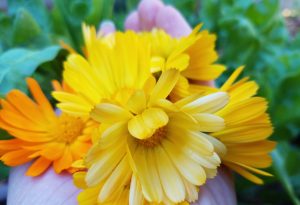
While research shows that some level of exposure to the sun is good for maintaining healthy levels of Vitamin D in the body, it is essential to protect ourselves from overexposure as well. When summertime hits I make sure to monitor the amount of time I spend in the sun, invest in a good hat, stock up on toxin-free sunscreens (my favorites are usually mineral-based), stay hydrated, and keep a steady supply of herbal infused oils on hand that are good for the skin.
Which herbal oils do I always have in my medicine chest? My favorites are calendula, chamomile, and rose hip – which I apply to the skin after an intense session in the sun or if I am feeling dry and warm. All this combined with a tall glass of cooling herbal iced tea, and I know that I am doing the best that I can to stay mindful and healthy during this hot season.
To learn more about DIY skincare for summer sun exposure, check out my free workshop at Harvest House in Concord on Sunday, July 8th from 11-12.
Note: The information presented in this article is for educational purposes only. For more information about local, seasonal, herbal remedies and regional botanical information, check back on the first Sunday of every month for the Hometown Herbalist column.
Anna Marie Beauchemin is a trained Clinical Western Herbalist and Biologist. Born and raised in Martinez, California, she is passionate about sharing her craft with her community and helping people to find balance and wellness in their lives. She runs her practice in downtown Martinez – offering herbal consultations and custom formulations, herbal education, product development and consulting, and community herb walks. For more information about her services visit her website at eastbayherbals.com, or follow her on Facebook and Instagram @eastbayherbals.
]]>Continuing into May gardeners all around will dust off their shovels and spades and start tending the earth below. We will make the trek to the local nursery to pick out fresh vegetable starts to line our garden beds with, and then the planting begins. Tomatoes, beans, peppers, corn – the cornucopia of plants that will adorn our yards this summer will start to make their way into the fertile spring ground.
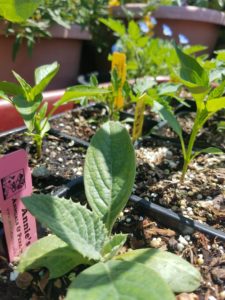
While planting a good crop of delicious fruits and vegetables is an essential component of any family’s nutritional needs, let’s not forget about the unsung heroes of the garden – the herbs! Though many of us are likely planting things like basil, oregano, and rosemary, what we may not realize is that most of the culinary herbs we’re planting are actually medicinal herbs.
People often think of medicinal plants as being unknown entities from a far-off land. In reality, however, many of the herbs used in herbal medicine meet halfway between the medicinal and culinary worlds. Medicinal plants are often dualistic in nature, and it is this duality that makes them an ideal choice for someone who is interested in learning more about herbalism. By adding herbs into your garden you can elevate your gardening game, incorporating a new level of health and wellness into your home.
Herbs like thyme, oregano, basil, sage, and rosemary not only have a distinct flavor that makes them a great addition to any summer dish but a myriad of medicinal properties as well. Medicinal flowers like calendula, borage, chamomile, and violet can add both beauty to the landscape and elegance to seasonal salads and desserts. For those of you who enjoy growing your own fruit, berries like elderberry and raspberry (though we use the leaf of raspberry, not the berry) offer potent medicine as well. The rinds of California’s prized citrus, like orange and lemon, can be used as a flavorful and medicinal component to many teas.
What’s better yet? Many of the herbs listed above do great in planters and pots, making them an option for someone with little to no backyard space. While having an urban farm may be the dream (ok, at least mine) you don’t have to have a big garden to plant medicinal herbs. When it comes to some of nature’s most giving plants a simple windowsill or porch will do the trick!
One of the things I love so much about herbalism is its versatility. Just as the food we put into our bodies acts as medicine, the herbs we add to our dishes do the same. From the fresh homegrown tomato to the robust patch of thyme that pours out of a planter on your porch, turning your food into medicine is a practice that brings vibrancy to the yard and added health to you and those that you love. This year, when you’re planning your garden, make sure to save a little space for some of the many medicinal plants mentioned above.
Interested in learning more about planning a medicinal herb garden? Join me for a FREE community workshop at Harvest House in Concord on Saturday, May 19th from 11:00 am-12:00 pm. We will be going in depth about what herbs to plant in your yard and how they can be used, as well as talking about plants that are beneficial to pollinators.
Note: For more information about local, seasonal, herbal remedies and regional botanical information, check back on the first Sunday of every month for the Hometown Herbalist column.
]]>
Anna Marie Beauchemin is a trained Clinical Western Herbalist and Biologist. Born and raised in Martinez, California, she is passionate about sharing her craft with her community and helping people to find balance and wellness in their lives. She runs her practice in downtown Martinez – offering herbal consultations and custom formulations, herbal education, product development and consulting, and community herb walks. For more information about her services contact her at eastbayherbals@gmail.com or visit her website at eastbayherbals.com.
Special to the Gazette
When I was growing up, my mom had a plethora of remedies that she would use with me whenever I got sick. She had a kitchen cabinet full of herbs and spices, and a pantry full of food that she somehow seemed to magically weave together, into something that usually left me feeling better than I did before. She was my go-to practitioner for most of my life. No matter what the ailment was (granted, I have been fortunate with good health in my 33-years on this earth), she always seemed to have something up her sleeve that would help. We had a garden in the backyard that provided us with homegrown fruits and vegetables, and chickens in the coop that gave us fresh eggs. We were surrounded by the natural beauty and plants of the Alhambra Valley.

The roots of our country’s medicine are not so different from the tale I told above. From the family caregiver, to the community doctor, to the indigenous healers that came before us, the roots of medicine in the United States, and the rest of the world are based on very similar principles – using the plants and foods around you to heal that which ails you.
In California, there are a lot (and I mean a lot) of plants that grow here and that are extremely beneficial to our health and well-being. From the weeds that grow in our backyards, to the majestic Bay Laurel trees in the Carquinez hills, we are surrounded by plants with medicinal properties. The therapeutic use of these plants is called herbal medicine.
With a 5000-year history of being used by people around the world, [1] the practice of using plants as medicine is a long-standing tradition across the globe. Flash forward to the present day, and the field of herbalism continues to grow and change to meet the needs of the modern person. In addition to a rich oral and written history supported by anecdotal evidence, herbal medicine is now studied at the clinical level as well. Due to the advancements in modern science, we can now pick a plant apart, isolate the exact phytochemicals within that plant that lead to its healing properties, and look at how those properties affect a person’s physiology and health.
We are fortunate in the United States to have a well-established modern medicine system which saves countless lives on a daily basis. Advancements in western medicine have allowed people to live longer – an opportunity that was not always available in previous times. Contemporary medicine is an incredible thing, and I think because of this many people assume that the choice is one or the other; do I go the natural route, or do I go the doctor instead?
Luckily, living in this world right now, we have the option to choose both. We can utilize the traditions of those who came before us while simultaneously benefiting from the innovations of modern medicine. When used as a compliment to your regular healthcare practice, these two approaches to wellness have a tremendous opportunity to heal.
Why herbs? Because that’s what people have been doing since the beginning of time, and lucky for us, they’re everywhere!
Note: For more information about local, seasonal, herbal remedies and regional botanical information, check back on the first Sunday of every month. Want to learn more and can’t wait? I will be teaching a free workshop on Herbalism at Harvest House in Concord on April 15th from 11:00-12:00.
Anna Marie Beauchemin is a trained Clinical Western Herbalist and Biologist. Born and raised in Martinez, California, she is passionate about sharing her craft with her community and helping people to find balance and wellness in their lives. She runs her practice in downtown Martinez – offering herbal consultations and custom formulations, herbal education, product development and consulting, and community herb walks. For more information about her services contact her at eastbayherbals@gmail.com.
[1] Herbal Medicine Fundamentals. (2016, November 13). Retrieved March 24, 2018, from https://www.americanherbalistsguild.com/herbal-medicine-fundamentals
]]>